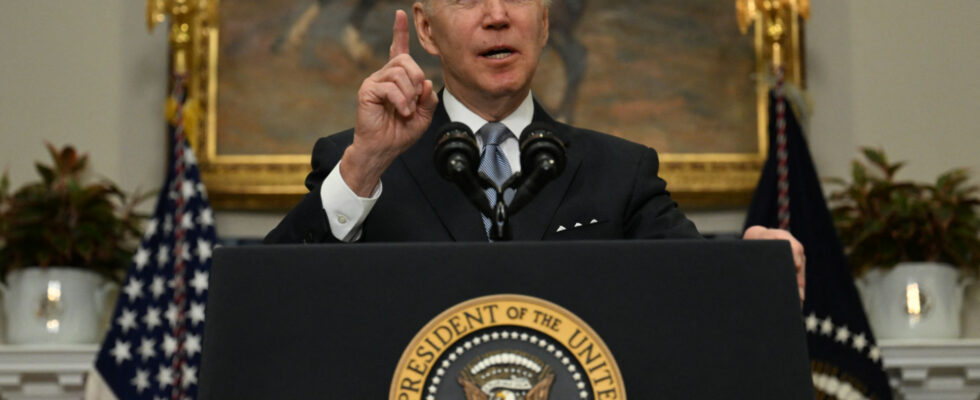Iran’s unprecedented attack on Israel using hundreds of drones and missiles overnight from Saturday to Sunday was the culmination of two weeks of tensions, during which Washington made considerable efforts to prevent the region does not catch fire. The United States, with the support of European destroyers, destroyed “more than 80” drones and “at least six ballistic missiles intended to strike Israel from Iran and Yemen”, the Central Command of the United States said on Sunday. US Army (Centcom).
During the Iranian attack
About 100 medium-range ballistic missiles, more than 30 cruise missiles and at least 150 attack drones have targeted Israel from Iran, according to a US military official. The Israeli army, for its part, recorded more than 350 projectiles and claimed that 99% were destroyed. Two American ships in the region, the USS Arleigh Burke and the USS Carney, destroyed half a dozen missiles before planes took action, in turn destroying more than 70 Iranian drones. A battery of Patriot missiles shot down another cruise missile not far from the Iraqi city of Erbil, in Kurdistan.
US forces also destroyed “a ballistic missile on its launch vehicle and seven drones destroyed on the ground before launch in areas of Yemen controlled by the Iran-backed Houthis,” according to Centcom.
US President Joe Biden spent Saturday evening following the events live in the famous “Situation Room”, the situation room of the White House. “We estimate that more than a hundred missiles were on approach at the same time, at any given time. The results of the defensive measures were of course unclear until it was all over,” said an official on site. , to describe the atmosphere of tension.
The detonator
The Iranian attack is intended to be a response to the strike attributed to Israel on April 1 against Tehran’s consulate in Damascus, in which seven members of the Revolutionary Guards, including two generals, died. Iran immediately affirmed that the strike would not go unanswered.
Senior American officials were briefed on the attack on Damascus during a visit by the Israeli ambassador and military attaché to the White House, according to a US administration official. “We did not participate in this strike but we knew it would have consequences,” he added.
In the following days, President Biden asked the government to “defend Israel as much as possible” and to ensure that the means allowing this were deployed, according to a directive from Washington.
American preparations
Before the Iranian attack, U.S. officials, including Defense Secretary Lloyd Austin and Secretary of State Antony Blinken, remained “in constant contact” with Israel as well as other countries in the region. General Erik Kurilla, head of the military command in charge of the Middle East, visited the site several times, providing real-time information while ensuring coordination with Israel and other regional partners.
The United States was also in contact with Iran, via “a series of direct communications relayed by Switzerland”, added an American official. Additional troops have also been deployed to the region “to enhance regional deterrence and protection of U.S. forces,” according to the Department of Defense.
And now ?
Since the start of the conflict in Gaza, following the Hamas attack in southern Israel on October 7, the United States’ objective has been to avoid contagion in the region, and Washington has sought at all costs to reduce tensions. “We will not participate in any potential action on their part,” insisted a US official, when asked about Israel’s possible responses to this weekend’s attacks, “we do not see ourselves getting involved in it.”
Israel for its part “has been clear with us that they do not want an escalation with Iran,” continued this official. But according to him, “the big question is not only whether Israel will act, but also what it will choose to do.”
